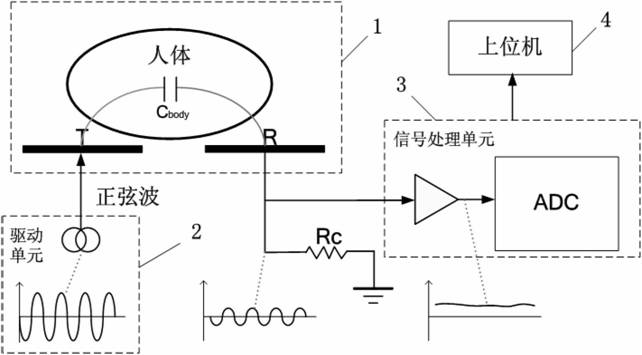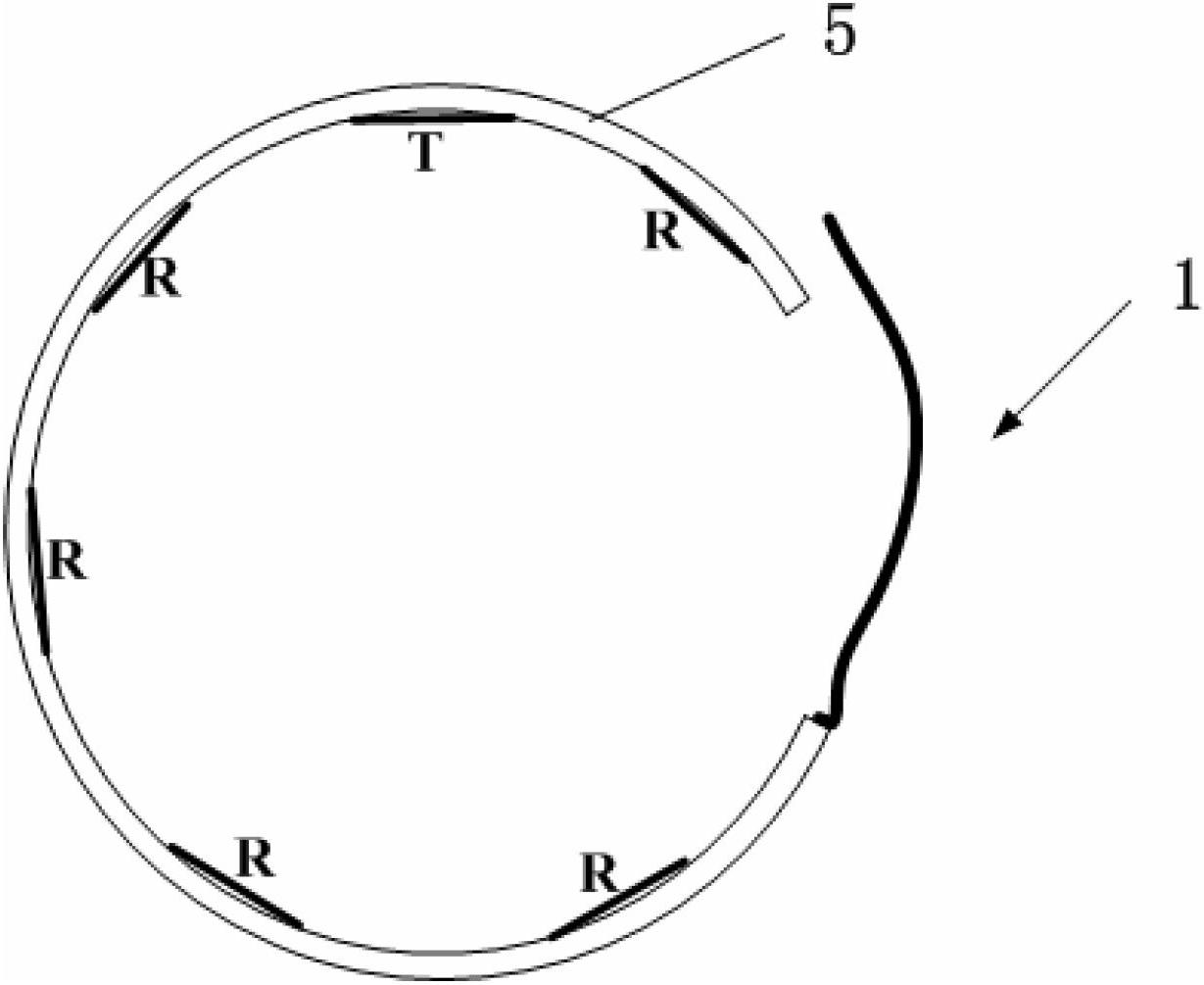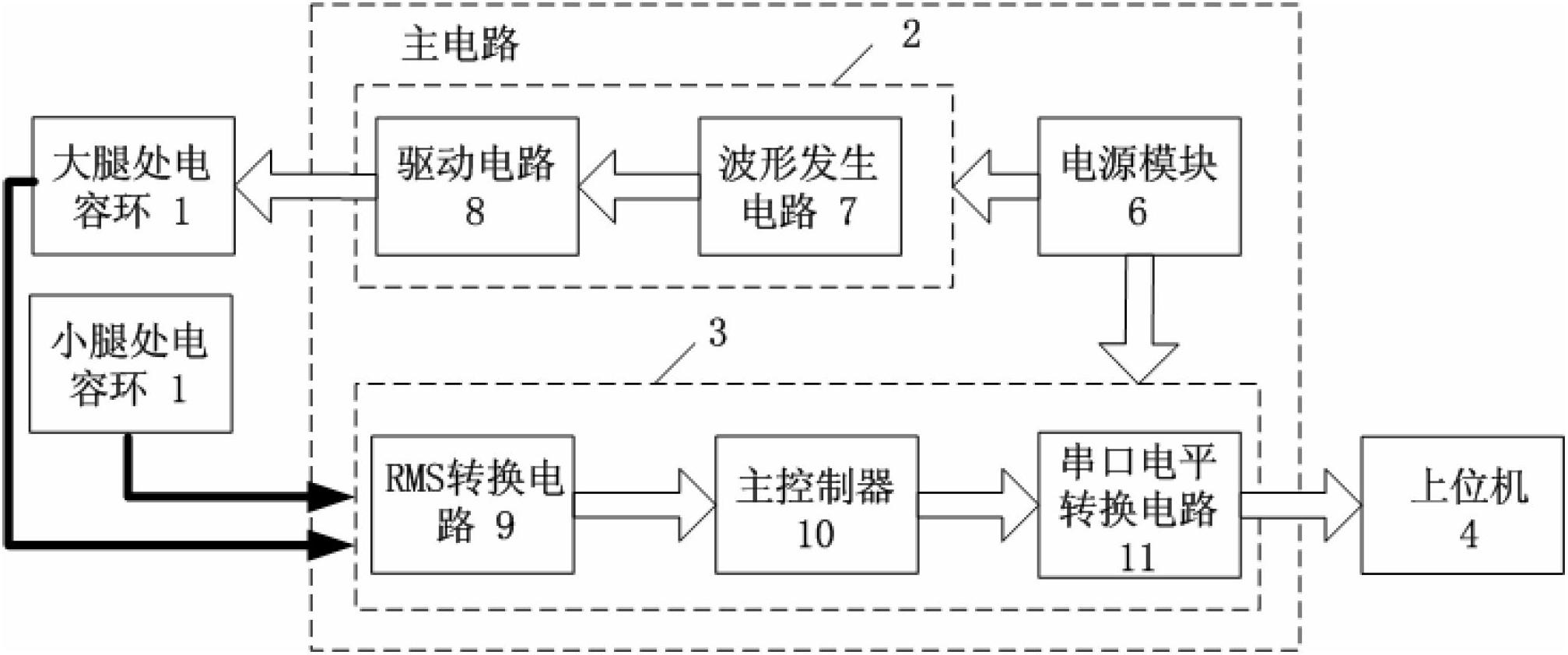Capacitance sensing system for human body motion modal identification
A technology of modal recognition and capacitive sensing, which is applied in the fields of sensors, applications, and medical science, can solve the problems that technical means cannot be directly applied, and there is no human lower limb motion modal recognition, so as to solve individual differences and reduce delay , to ensure the effect of stability
- Summary
- Abstract
- Description
- Claims
- Application Information
AI Technical Summary
Problems solved by technology
Method used
Image
Examples
Embodiment Construction
[0022] The invention utilizes the principle of capacitance identification, adds metal electrodes on both sides of the human body, uses the human body as the dielectric, and uses the change of capacitance to reflect the deformation of the muscles of the lower limbs, thereby identifying different motion modes. The present invention will be described in detail below in conjunction with the accompanying drawings and embodiments.
[0023] Such as figure 1 , figure 2 As shown, the present invention includes two capacitive rings 1, a drive unit 2, a signal processing unit 3, and a host computer 4 respectively arranged at human thighs and shanks. Each capacitive ring 1 is composed of a transmitting electrode T and several receiving electrodes. R is composed of a thermoplastic ring 5, and the transmitting electrode T and each receiving electrode R are arranged at intervals inside the thermoplastic ring 5, and the capacitance information of multiple parts of the leg can be collected a...
PUM
 Login to View More
Login to View More Abstract
Description
Claims
Application Information
 Login to View More
Login to View More - R&D
- Intellectual Property
- Life Sciences
- Materials
- Tech Scout
- Unparalleled Data Quality
- Higher Quality Content
- 60% Fewer Hallucinations
Browse by: Latest US Patents, China's latest patents, Technical Efficacy Thesaurus, Application Domain, Technology Topic, Popular Technical Reports.
© 2025 PatSnap. All rights reserved.Legal|Privacy policy|Modern Slavery Act Transparency Statement|Sitemap|About US| Contact US: help@patsnap.com



